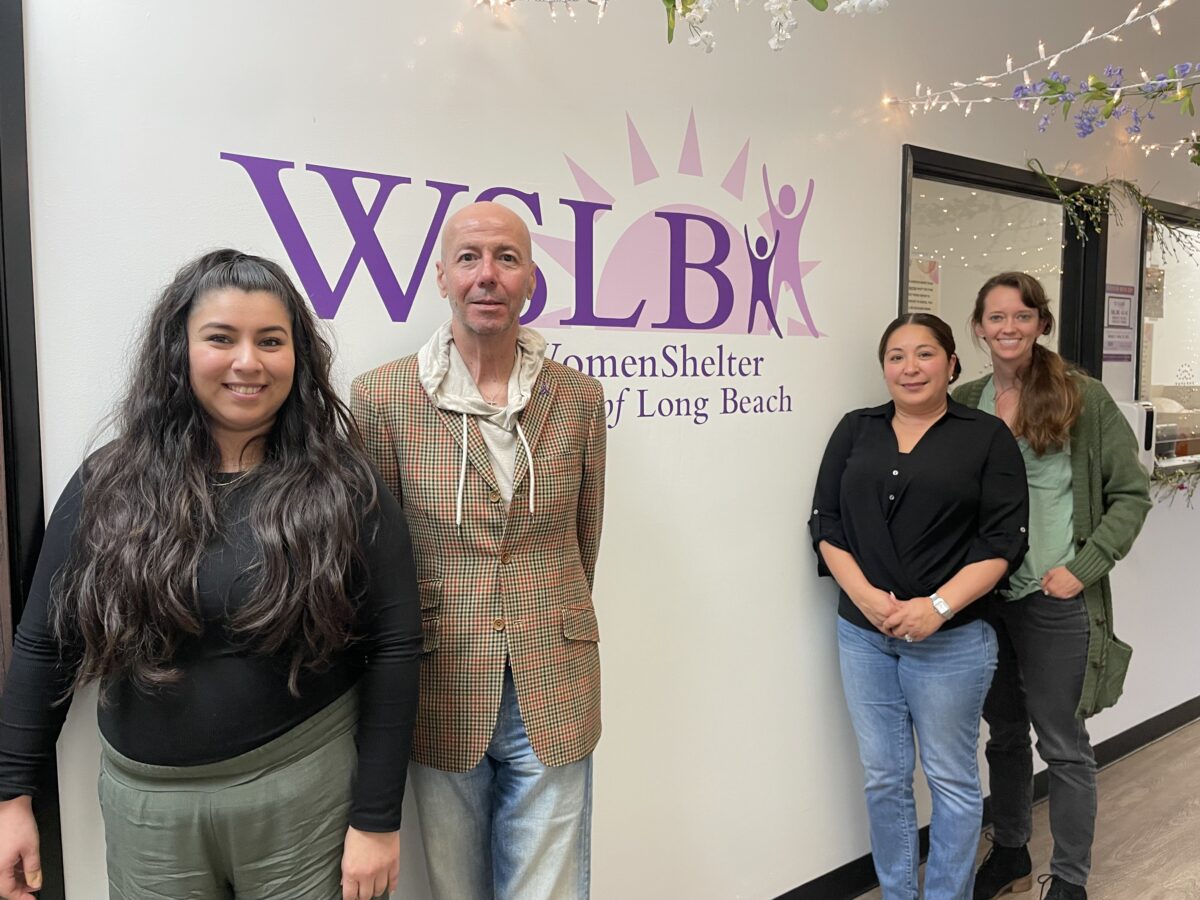WomenShelter has supported survivors with housing, counseling, and crisis services since 1977.
By Camila Chavarria, Staff Reporter
When people think of what a women’s shelter looks like, they may imagine rows of cots in a crowded and sterile-looking space—little personality, and even less warmth.
But at the WomenShelter of Long Beach (WSLB), the spaces aim to help people feel more at home. The rooms resemble typical living areas, offering comfort and familiarity rather than the institutional feel some people may associate with domestic violence shelters.
Visitors to the WSLB are likely to find thoughtful arrangements that reflect care—rooms for people of all ages, a donation room filled with new clothes, and a welcoming decor. There are cribs and baby toys, books and activities for children, televisions, kitchenware, and personal touches throughout the space.
“Everyone that walks into the shelter feels safe and welcomed,” said shelter manager Mary Jane Felix. “They don’t want to leave our program.”
Located at the corner of East San Antonio Drive and Long Beach Boulevard, the shelter opened in 1977 as one of the first domestic violence agencies in Southern California. What began as an 11-bed facility for women and children has expanded into a 31-bed shelter.
Services include relocation assistance, emergency housing, peer counseling, case management, and legal resources. The shelter also operates a 24-hour crisis hotline, with support available in English, Spanish, and Tagalog. In addition, staff lead workshops for youth and community members on recognizing the signs of domestic violence and identifying red flags in abusive relationships.
Survivors from all backgrounds and gender identities are welcome at the WSLB. According to Felix, the safety of the clients there is the facility’s top priority. Felix added that ensuring a client’s safety before they arrive is critical, as alerting an abusive partner could escalate the situation.
“We would ask the first question, ‘Are you in a safe location?’,” Felix said. “If they’re not, we would have to let them know they would have to call back when they are in a safe location.”
The shelter was founded by Dr. Virginia Corbett, herself a survivor of domestic abuse.
“I remember how terrified I felt and how really helpless I was. On at least three occasions I was run out of my own home by my husband,” Dr. Corbett told the Press-Telegram at the time. “Once it was the middle of the night and I had $20 to my name. Let me tell you that there’s no place an unemployed woman with four children can go with $20.”
The U.S. Justice Department defines domestic violence as a pattern of harmful behavior used by one person to control or dominate their partner. This abuse can take different forms—emotional, physical, psychological, or even financial—and some survivors may not necessarily realize they’re experiencing abuse.
Nearly 29 percent of American women have experienced intimate partner violence, according to the National Domestic Violence Hotline. The survivors advocacy group reports that 1 in 4 and 1 in 7 men in the U.S. have experienced severe physical violence from an intimate partner at some point in their adult lives. Further, domestic violence affects approximately 12 million people every year—both men and women.
Youth program manager Sarah Monarrez noted that domestic violence is more widespread than many realize and affects far more than just individual survivors.
“Although, you may not feel like you don’t know anyone who has gone through domestic violence, it’s happening,” Monarrez said. “It doesn’t impact one or another, it impacts the community.”
Since 2004, the shelter has partnered with the local Grunion Gazette to host an annual gift card drive, raising more than $340,000 for survivors of domestic violence and their families. Last year’s campaign set a new record with $46,852 in donations.
In a 2024 interview with the Press-Telegram, former Grunion executive editor Harry Saltzgaver reflected on the impact of the fundraiser, praising the community’s continued support. “We’re saddened that the need to help domestic violence victims is still so great,” he said, “but we are excited to be able to ease the pain with this effort, thanks to our readers.”
Kent Wallace-Meggs is the executive director of the WSLB. As a survivor of childhood abuse and domestic violence, Wallace-Meggs has an intimate understanding of the support clients may need at the shelter. He told The Bulletin that his own experience living with trauma has helped to inform the ways in which the shelter provides care and service.
“At one point of my life, I found myself unhoused,” Wallace-Meggs said. “I recognized that a huge portion of those who are unhoused are [due to] domestic violence.”
Legal advocate Blaire Bailey told The Bulletin that working at the shelter has given her a deeper appreciation for the courage it takes to rebuild after abuse. She noted that moments in the courtroom often reveal just how resilient survivors can be.
“The people who are at the shelter are the strongest people and are incredibly brave. That impresses me every day,” Bailey said. “Seeing them advocate for themselves in court impresses me with their strength.”

